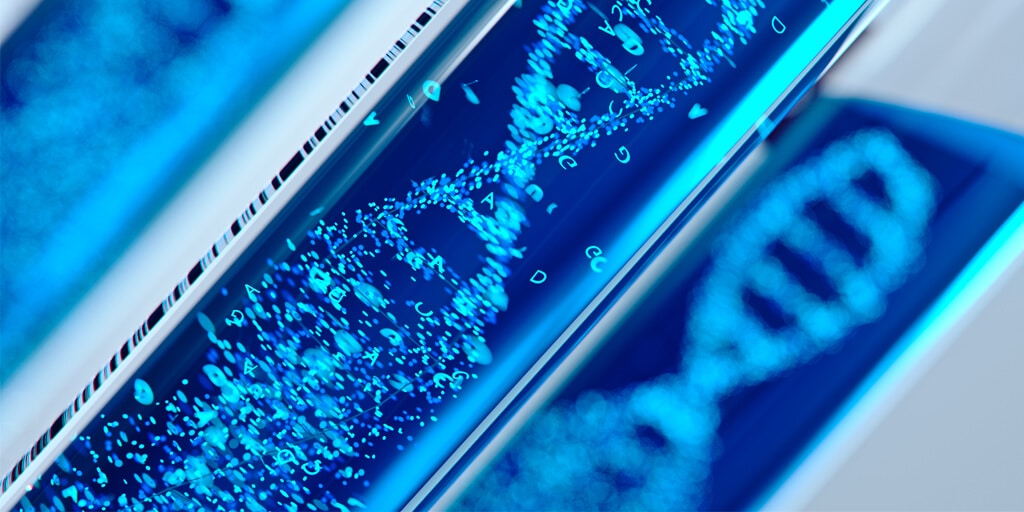Gene Regulatory Networks vs. Darwin’s Theory

In this article, Dr. John Ankerberg and Dr. Stephen Meyer discuss Gene Regulatory Networks vs. Darwin’s Theory.
Dr. John Ankerberg: In a previous article we talked about body plans, but that’s not the only problem that you’ve found. What’s another one?
Dr. Stephen Meyer: Well, there’s a related problem, and it’s also emerged from studies in the field of developmental biology. There’s a famous developmental biologist at the California Institute of Technology named Eric Davidson. And Davidson has mapped what he calls developmental gene regulatory networks. And these are essentially integrated circuits, or networks of genes and their protein products that are functioning like integrated circuits. And the way to understand what they do is this, a gene that will direct the construction of a protein, which is actually a signaling molecule. And that protein will then either turn on or turn off the expression of other genes. And those genes will also produce still other signaling molecules that will turn on or turn off still other genes. And there’s this whole vast network of genes and their protein products that are linked together, that have the effect of controlling how cells develop and differentiate from each other during the pattern of animal development. So, to build an animal you need these developmental gene regulatory networks, or these integrated circuits of genes and their gene products.
Now, Davidson has discovered something else that’s very important about these developmental gene regulatory networks, and that is that you can’t change them very much or else animal development shuts down. So he says you can’t perturb them or else you again get the problem of lethals.
So that raises a profound question for evolution, or for evolutionary theory. Because to build a body plan, we know we need these gene regulatory networks, which implies that to build a new animal body plan you would need one gene regulatory network to evolve into another gene regulatory network. But we know experimentally the one thing that cannot happen is for these gene regulatory networks to change very much. So it really raises the question of how you would ever get a new body plan to emerge from an older body plan at all. How would you make that transformation when the very thing you need to transform cannot be changed, namely these gene regulatory networks?
Dr. John Ankerberg: And looking at your picture of what a gene regulatory network looks like, it’s awfully complicated. I would think that raises the question too, where did the whole thing come from in the first place?
Dr. Stephen Meyer: Well, it’s not just complicated. There’s an integrated complexity here that’s characteristic of circuitry. This is the kind of thing that engineers design. It looks like a motherboard or an integrated circuit. And it also, I think, raises the question of design. And it does that for another reason as well. Because gene regulatory networks are made of a vast network of genes, and each gene contains digital code. And that gets back to this really fundamental question that we’ve been talking about in previous episodes: where does all that information come from? We know that we need additional layers of information beyond what’s in the DNA. But these gene regulatory networks contain genetic information in a digital form stored in DNA, and that’s a big problem too.
So at every level we have difficulties that the modern neo-Darwinian synthesis has just been unable to solve. It does not provide an explanation for the origin of the genetic information; it doesn’t provide an explanation for the origin of the higher level epigenetic information; and mutations do not give a good explanation for the origin of body plans. We don’t get early acting developmental mutations that are beneficial, and yet we need those kind. And we can’t perturb these gene regulatory networks. And we know that to build a new animal body plan you would need to generate new developmental gene regulatory networks. So there are multiple problems confronting the neo-Darwinian mechanism, and yet that is still the standard mechanism that is taught and proposed as the explanation for the origin of the kind of large scale change that we see arising in the fossil record in the history of life in events such as the Cambrian explosion.
Dr. John Ankerberg: Yes. I mean, it raises the question if, boom, you have all of these animals in the Cambrian fossil records showing up, okay, and all of this stuff is basically there, where did it come?
Dr. Stephen Meyer: Where does the genetic information come from? Where does the higher level information come from? And how do you build a body plan? None of these problems have been answered by modern Darwinian theory; and so we clearly need a new theory.
Extracted from our series The Case for Intelligent Design, available through our website.








